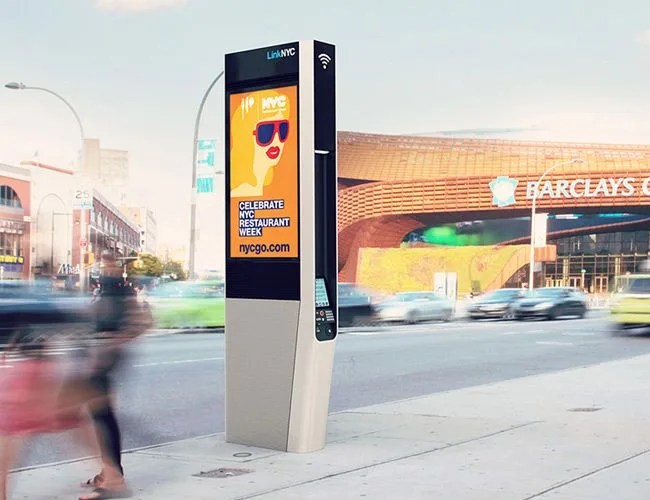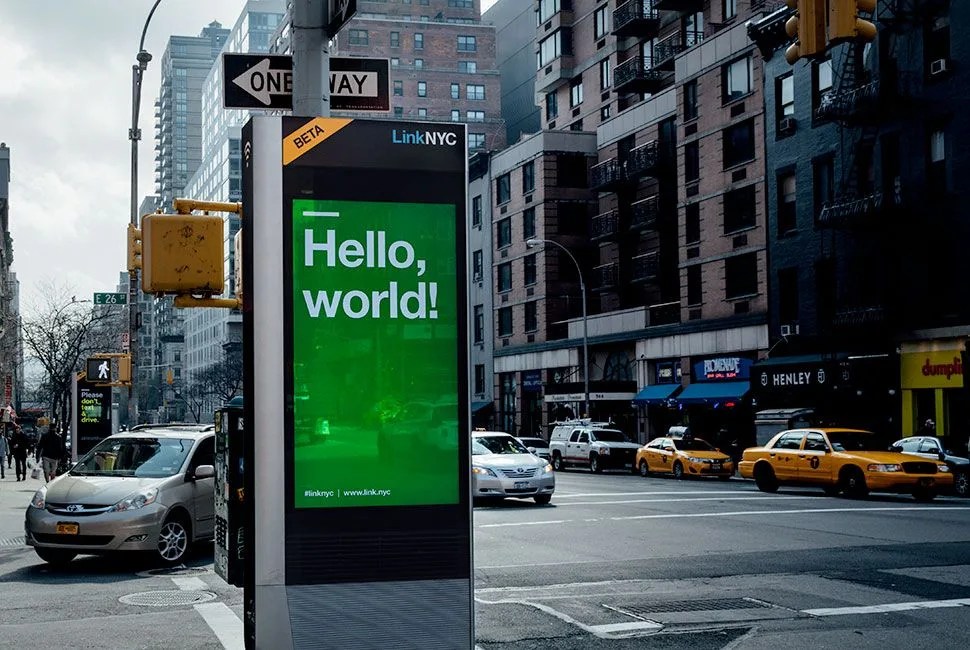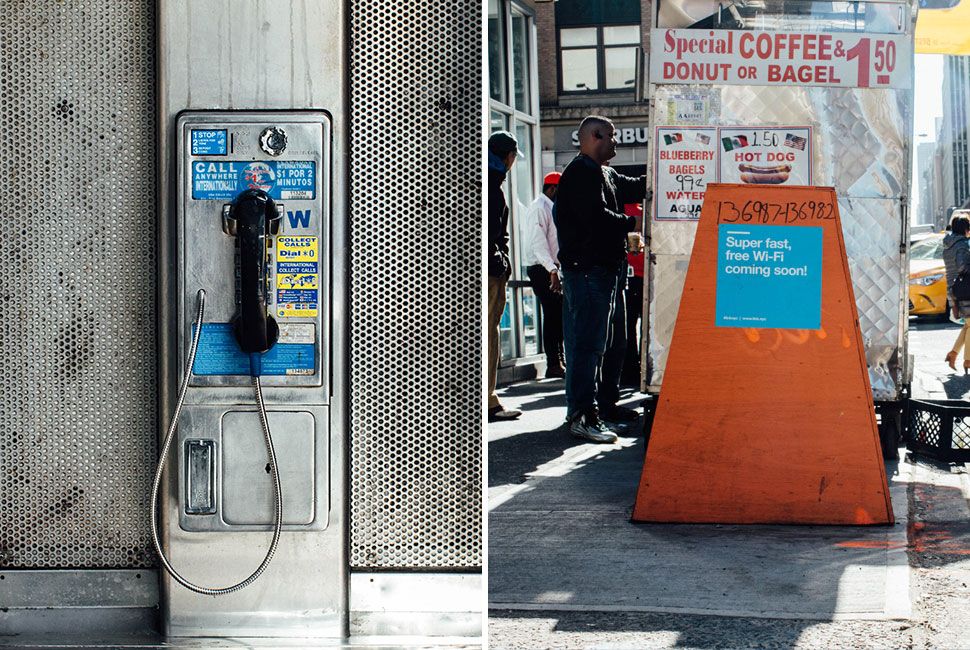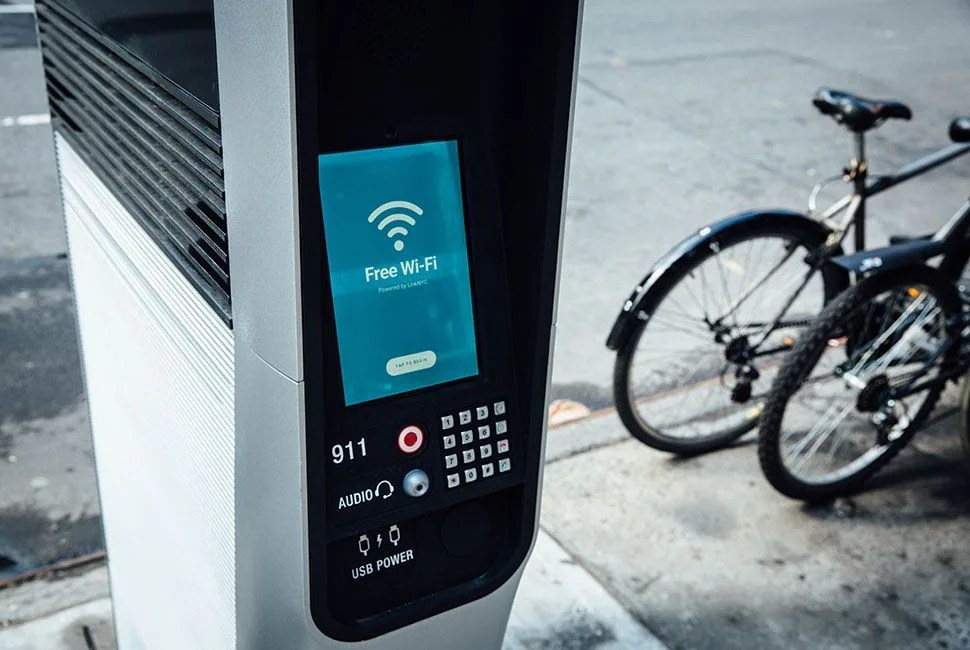3 photos
“We’re an effort to reimagine the city’s antiquated payphone infrastructure and deliver a state-of-the-art 21st century experience for New Yorkers — workers, residents and visitors,” says Jen Hensley, general manager for LinkNYC. The “effort” kicked into high gear in December 2015, when LinkNYC began physically replacing the city’s old pay phones, which Hensley estimates have been around since the 1970s, with kiosks, or wi-fi hubs.
When activated, each kiosk will provide one gigabit of wi-fi service — which the company claims is 100 times faster than average public wi-fi and your mobile device’s LTE network — to anyone connected to it within a radius minimum of 150 feet. And it’s free for anybody to use. As far as Hensley knows, there’s no other public wi-fi system like it.
LinkNYC originated at the end of the Bloomberg administration, when the city issued an RFI to decide what to do with the city’s pay phones. Titan, an outdoor advertising company, and Control Group, a technology company, met and proposed the original idea behind LinkNYC. Bloomberg left office without advancing it, says Hensley, but the de Blasio administration, with the leadership of the Department of Information Technology and Telecommunications, pushed the project forward. Titan and Control Group merged to form Intersection, and they then joined with CIVIQ Smartscapes, an industrial-grade manufacturer of ruggedized digital display units, and Qualcomm, a wireless telecommunications company, to form the joint venture CityBridge, whose proposal for LinkNYC was accepted in December 2014.
“When we give every New Yorker free wi-fi, we really don’t know what’ll happen. We don’t know what innovation will come of it or how people will use it.”
Since the first kiosk went into the ground 10 weeks ago, Hensley says they’ve been “rolling them out.” As of mid-March 2015, there are roughly 100 kiosks in the city. That number is expected to reach 510 kiosks, in all five boroughs, by the end of this July. However, only 31 of those 100 are activated (i.e., serving ads and wi-fi), because installing and activating are two separate processes. To be activated, each kiosk must be linked to the city’s fiber network, whose nucleus is in Chelsea. The fiber has to then be strung from kiosk to kiosk. Hensley says they’re currently working up 8th Avenue, with the plan of going through the Upper West Side, East Harlem and into the Bronx. Simultaneously they’re also “pulling fiber” in Queens and working their way through Long Island City and Brooklyn.
When completed, 256 people (LinkNYC’s contractual minimum) can connect with each kiosk without any deterioration in speed or service. The kiosk will be equipped with a tablet interface, where people can make free domestic phone calls (no smartphone required), browse the web, and have direct access to wayfinding and other city services. There will also be two USB ports per kiosk, working independently from the tablet, for charging. “We created a highly custom product,” says Hensley. “We designed the operating system for the tablet experience, we created all the user experience features of the network, including the captive portal sign on.” The kiosk’s wi-fi can be accessed through a mobile device, laptop or phone — log in once, at one kiosk, and you can easily connect to any other kiosk in the city.




